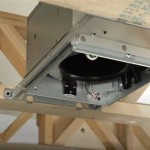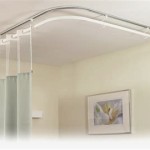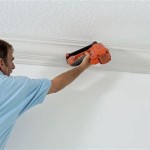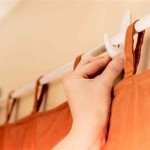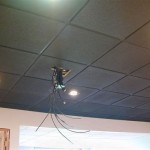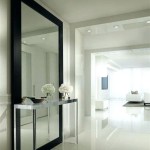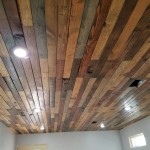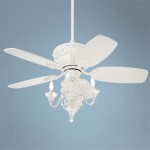The Beauty of Beadboard Ceilings: A Comprehensive Guide
Beadboard ceilings, characterized by their parallel vertical grooves separated by narrow beads, have long been a popular design choice for homes, radiating a classic and timeless aesthetic. This type of ceiling treatment offers a versatile solution that can enhance the visual appeal of various spaces, from traditional farmhouses to modern coastal homes. This guide explores the diverse advantages, installation considerations, design applications, and maintenance aspects of beadboard ceilings, providing a comprehensive resource for homeowners and design professionals alike.
The defining feature of beadboard is its distinctive grooved pattern. This pattern is created by milling narrow, vertical grooves into the wood, creating a series of parallel lines. Between each groove is a small, rounded ridge, known as a bead. It is this combination of grooves and beads that gives beadboard its characteristic texture and visual interest. Typically manufactured from wood, MDF (Medium-Density Fiberboard), or PVC, beadboard offers a range of material options to suit different budgets and environmental conditions.
The use of beadboard for ceilings dates back centuries, finding popularity in Victorian and early 20th-century homes. Its initial appeal stemmed from its ability to provide an affordable and aesthetically pleasing alternative to more elaborate plasterwork. Historically, beadboard was also valued for its ability to conceal imperfections in the ceiling structure, offering a functional and decorative solution simultaneously. Today, beadboard ceilings continue to be embraced for their ability to inject character and warmth into a space, blending seamlessly with both traditional and contemporary design styles.
Advantages of Beadboard Ceilings
Beadboard ceilings offer a multitude of advantages, making them a compelling choice for homeowners seeking to enhance their interior spaces. These benefits span aesthetic appeal, practical functionality, and ease of installation and maintenance.
Firstly, beadboard ceilings significantly enhance the aesthetic appeal of a room. The vertical lines of the beadboard visually elongate the space, creating a sense of height and airiness, particularly beneficial in rooms with lower ceilings. This visual effect can transform a small or cramped room into a more open and inviting environment. Furthermore, the texture and detail of the beadboard add depth and character to the ceiling, making it a focal point of the room rather than a plain, overlooked surface. The timeless appeal of beadboard ensures that it complements a wide range of interior design styles, from rustic farmhouse to elegant coastal chic.
Secondly, beadboard ceilings offer practical benefits in terms of maintenance and durability. When properly installed and maintained, beadboard can be a long-lasting and resilient ceiling treatment. Painted beadboard is easy to clean, requiring only occasional wiping with a damp cloth to remove dust and grime. The material's inherent resistance to moisture (especially when PVC is used) makes it a suitable choice for bathrooms and kitchens, where humidity levels are typically higher. Furthermore, beadboard can effectively conceal minor imperfections in the existing ceiling, such as cracks or uneven surfaces, providing a smooth and uniform appearance.
Finally, compared to some other ceiling treatments, beadboard offers a relatively straightforward installation process. While professional installation is always recommended for achieving optimal results, experienced DIY enthusiasts can also successfully install beadboard ceilings. The material is typically available in planks or sheets, which can be cut to size and attached to the ceiling joists or furring strips using nails, screws, or adhesive. This ease of installation can translate to cost savings and greater flexibility for homeowners undertaking renovation projects.
Installation Considerations for Beadboard Ceilings
Proper installation is crucial for ensuring the longevity and aesthetic appeal of a beadboard ceiling. Several key considerations must be addressed before and during the installation process to achieve a successful outcome.
Before beginning the installation, it is essential to prepare the existing ceiling surface adequately. This involves cleaning the surface to remove any dust, debris, or loose paint. If the existing ceiling is uneven or damaged, it may be necessary to install furring strips to create a level and stable base for the beadboard. Furring strips are typically wooden or metal strips that are attached to the ceiling joists, providing a consistent surface for the beadboard to be fastened to. Ensuring a level surface is critical for preventing warping or unevenness in the finished ceiling.
Choosing the appropriate material is also a critical decision. Wood beadboard offers a classic and natural look but can be more susceptible to moisture damage and requires regular sealing or painting. MDF beadboard provides a cost-effective alternative and is less prone to warping, but it is not as moisture-resistant as PVC. PVC beadboard is an excellent choice for bathrooms and kitchens due to its exceptional moisture resistance and ease of cleaning. The selection of material should be based on the specific environmental conditions of the room and the desired aesthetic.
During installation, it is imperative to use appropriate fasteners and techniques to ensure the beadboard is securely attached to the ceiling. Depending on the material and the existing ceiling structure, nails, screws, or adhesive may be used. When using nails or screws, it is important to countersink the fasteners and fill the holes with wood filler for a smooth and seamless finish. When using adhesive, ensure that it is applied evenly and that the beadboard is pressed firmly against the ceiling surface. Proper spacing between the beadboard planks or sheets is also crucial to allow for expansion and contraction due to changes in temperature and humidity. Leaving small gaps between the boards can prevent buckling or warping in the long run.
Design Applications of Beadboard Ceilings
Beadboard ceilings are remarkably versatile and can be incorporated into a wide range of design styles and applications. Their ability to add texture, depth, and character makes them a valuable tool for enhancing the visual appeal of any room.
In traditional homes, beadboard ceilings can be used to create a classic and timeless aesthetic. Paired with traditional moldings, wainscoting, and other architectural details, beadboard ceilings can evoke a sense of history and elegance. Painting the beadboard in a classic white or cream color can further enhance this traditional feel. Beadboard ceilings are particularly well-suited for farmhouse-style homes, where they can complement rustic wood beams, exposed brick, and other natural materials.
In modern coastal homes, beadboard ceilings can be used to create a light and airy atmosphere. Painting the beadboard in a soft pastel color, such as light blue or seafoam green, can evoke the feeling of the ocean and sky. Pairing the beadboard with natural materials, such as bamboo or seagrass, can further enhance this coastal aesthetic. Beadboard ceilings are also a practical choice for coastal homes due to their moisture resistance, making them well-suited for bathrooms and kitchens.
Beyond traditional and coastal styles, beadboard ceilings can also be incorporated into contemporary and eclectic designs. Experimenting with different paint colors, such as bold blues, greens, or even black, can create a dramatic and unexpected effect. Using beadboard in combination with other ceiling treatments, such as recessed lighting or skylights, can add visual interest and functionality to the space. The versatility of beadboard allows it to be adapted to a wide range of design preferences, making it a valuable tool for creating unique and personalized spaces.
The direction of the beadboard can also significantly impact the visual effect of the room. While vertical installation is the most common, horizontal or even diagonal installation can create a more contemporary and unexpected look. Horizontal installation can visually widen a narrow room, while diagonal installation can add a sense of dynamism and energy to the space. The choice of direction should be carefully considered based on the specific dimensions and design goals of the room.
The finish of the beadboard is another important design consideration. Painted beadboard is the most common choice, offering a wide range of color options to match any décor. Stained beadboard can showcase the natural grain of the wood and add warmth and character to the room. Distressed beadboard, with its intentionally aged and weathered appearance, can create a rustic and charming effect. The choice of finish should be based on the desired aesthetic and the overall style of the room.

Beadboard Ceiling 101 Ultimate Guide To Using These Panels

Why Beadboard On The Ceiling Is Nothing At All Like Dancing Space Between

Beadboard Ceiling 101 Ultimate Guide To Using These Panels

Diy Beadboard Ceiling And Crown Molding Designed Decor

Why Beadboard On The Ceiling Is Nothing At All Like Dancing Space Between

7 Best Porch Ceiling Ideas Life On Summerhill

Beadboard Ceiling 101 Ultimate Guide To Using These Panels

Generic 1 In X 6 8 Ft Pvc Beaded Ceiling Wall Board 208784 The Home Depot

Andi And Neil S Kitchen Stately Kitsch Basement Remodeling Makeover Ceiling

Timeless Elegance Of Beadboard Cabinet Doors
Related Posts

